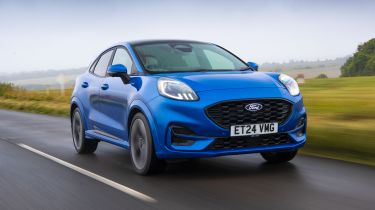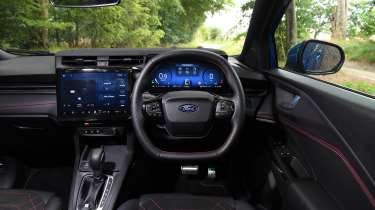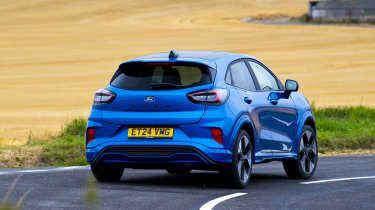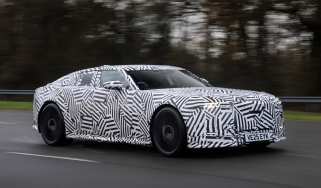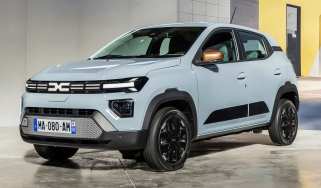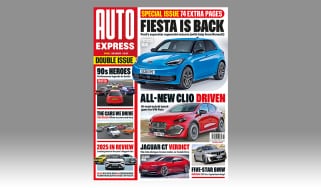New Ford Puma facelift 2024 review: best-selling SUV gets welcome upgrades
The Ford Puma SUV gets a subtle new look and better in-car tech as part of a 2024 facelift

Verdict
The Ford Puma has been given new tools to take on the small SUV sector, and on this evidence it’ll surely prove as popular as ever. The fresh interior tech is impressive, and the driving experience continues to shine in a class of otherwise safe and sanitised SUVs. It’s pricier than most of its rivals now though, and the demise of the more powerful Puma ST is disappointing to see.
Ford’s decision to kill off the Fiesta last year was met with a fair amount of confusion, considering how popular the firm’s long-running supermini was. It makes a lot more sense once you factor in the Puma however, which has largely filled the void left by the dinky hatchback, thanks to its fun dynamics, practicality, affordability and generous equipment levels.
Our main gripe with the Puma when it relaunched in 2019 was the cabin. It lagged behind the competition when it came to quality, and the small infotainment screen was a touch laggy. But Ford has addressed the Puma’s shortcomings for its mid-life facelift, which we’re driving here for the first time.
Tech-savvy buyers will appreciate the Puma’s new dash layout, which comprises a larger 12-inch display and revised infotainment running Ford’s latest SYNC4 software. It’s a marked improvement on what went before, with faster loading times between menus (which we had no problem navigating) and a layout that’s easy to read on the move with strong resolution.
Used - available now
Unfortunately, the additional screen real estate has forced Ford to incorporate the tactile physical climate controls into the bottom section of the display, which is annoying. But at least the bank of buttons is always visible.
The new 12.8-inch driver’s screen is seriously impressive in the car the size of the Puma, and it’s standard-fit across the range. It replaces the old car’s 4.2-inch display and it’s easy to flick between the different readouts thanks to the sensibly-sized, physical buttons on the steering wheel. Speaking of the steering wheel, that’s new for the facelift too; what at first looks a little ungainly (with its squared-off top and bottom) feels pretty natural on the move.
While the technology has been given a noticeable upgrade, interior fit and finish is unchanged. In the cabin, the dash and centre console will be familiar to those who’ve peered inside the current-generation Focus; the pre-facelift Puma didn’t offer the most premium cabin, and while the layout has changed, there’s far too many hard surfaces on display.
Practicality remains a strong point of the Puma, however. There’s still a commodious 456-litre boot (1,216 litres with the rear seats folded down) and a ‘Megabox’ hidden storage area beneath. This 68-litre plastic compartment with a drain plug at the bottom is, in our experience, a really handy spot for storing boots or wet kit after a muddy walk.
Don’t go looking for too many changes on the exterior for the new car, though. The front-facing Blue Oval badge has been relocated on the grille, and there’s some new lights. Otherwise, you’re limited to a few new colours and alloy wheel designs. That’s your lot.
The line up of engines is broadly the same, too. The Puma is front-wheel-drive only, and buyers are offered three petrol engines. There’s a 1.0-litre turbocharged three-cylinder using 48-volt mild-hybrid technology with either 123bhp or 153bhp – the former coming with either a six-speed manual or a seven-speed auto. The more powerful version is auto-only and is the one we’re driving here.
Sadly, Ford has killed off the range-topping 197bhp Puma ST, which means the raciest model now available is the ST ‘Powershift’, which uses a 1.0-litre turbocharged engine with 168bhp and a seven-speed auto box.
The Puma trim structure has been streamlined with four core versions: Titanium, ST-Line, ST-Line X and that performance-focused ST. The entry-level trim kicks things off at £25,800, which is several thousands more than the cheapest Renault Captur.
It is very well equipped though, with every version getting those two massive screens on the dash. The entry-level Titanium also benefits from 17-inch alloy wheels, cruise control, tinted rear windows, LED rear lights, a rear parking camera and selectable drive modes.
ST-Line models include a muscular body-kit, sports suspension, a leather sports steering wheel and alloy pedals, while ST-Line X cars come with stylish 18-inch wheels, privacy glass, a powered bootlid, wireless phone charging and a 10-speaker Bang & Olufsen sound system. The ST features 19-inch alloy wheels, even more aggressive exterior styling, plus Ford Performance seats, and a 360-degree camera.
Our car, the ST-Line X, came with £4,400 worth of options which bumped its price to over £35k – a lot for a small crossover with its roots traceable to the humble Fiesta. The summer weather didn’t really allow us to test the ‘Winter Pack’ (heated seats and steering wheel), however. Something we wouldn’t bother with are the 19-inch alloy wheels, which give the Puma a fidgety ride at low speeds. And that’s a shame, because we found the old Puma with smaller wheels to ride pretty well, despite it also offering the best dynamic balance in its class.
On the move in the new car and the steering feels light – with a vagueness to the straight ahead. It tightens up if you put the Puma into the Sport mode using the drive-mode selector and it relays a pretty accurate feel. There’s a good level of grip too, so immediately the Puma feels like a SUV suited to spirited driving and one you can flick through corners nicely.
Somewhat at odds with the now automatic-only Puma ST, the automatic gearbox wouldn’t be our choice for an engaging drive. While it delivers a smooth gear shift, there’s no manual override option and the gearchanges themselves aren’t too quick - even in Sport mode.
As it is in many of Ford’s other offerings, the six-speed gearbox is lovely. It’s precise enough if a little on the rubbery side, but this just makes it easier to use daily with a neutral-feeling clutch pedal.
The Puma’s standard chassis is well balanced, with a bit more body roll than the Fiesta (as you’d expect for a higher-riding model), but almost the same levels of playfulness behind the wheel. Even with the sports suspension on our ST-Line model, the damping isn’t too aggressive, and it has a decent level of compliance to make long journeys comfortable. It all comes together to give the Puma brilliant composure and an engaging drive.
It’s a shame the Puma ST is no longer offered with the turbocharged engine from the Fiesta ST under the bonnet, because with 197bhp and a slick six-speed manual, it was a lot of fun. The new ST ‘Powershift’ variant with an automatic transmission just doesn’t reach the same levels of engagement and with 168bhp, 248Nm of torque, it’s not as quick either.
It’s easy to see why the Puma has been such a success for Ford since it launched, and this facelift seems to hit all the right notes. The outgoing car came 10th in the 2024 Driver Power owner satisfaction survey, and in the correct specification, there’s no reason why the new version shouldn’t do even better.
| Model: | Ford Puma ST-Line X mHEV 155 DCT |
| Price: | £30,800 |
| Powertrain: | 1.0-litre 3cyl petrol MHEV |
| Transmission: | Seven-speed automatic, front-wheel drive |
| Power/torque: | 153bhp/190Nm |
| 0-62mph: | 8.7 seconds |
| Top speed: | 124mph |
| Economy/emissions: | 47.9mpg/ 133g/km |
| Size (L/H/W): | 4,186mm/1,805mm/1,536mm |
| On sale: | Now |

